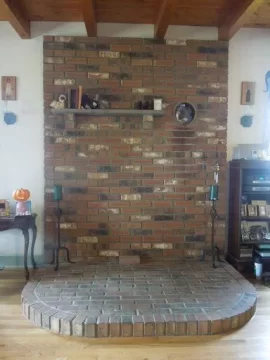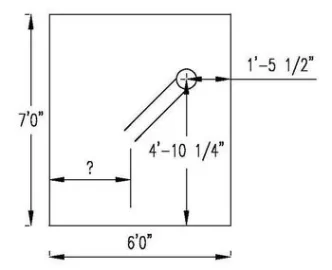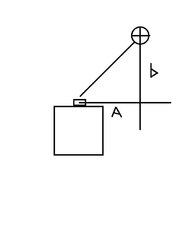- Nov 7, 2012
- 9
We are looking at getting an Avalon Olympic free standing stove for our home in NY. Here's a link to my thread asking about the Olympic and if it suits our needs:
https://www.hearth.com/talk/threads/avalon-olympic-too-much-stove-for-us.93878/
Now is where things get real tricky. I've attached a photo of the hearth with some dimensions. As you can see the thimble/crock is not centered on the hearth. The plan right now is to 45 directly off the top stove collar into an adjustable slider and into a T which will direct the pipe through the crock and into the chimney, all with 6" double wall. Does this sound doable? Original install years ago when we bought house had old VC resolute with 45 off stove top, one fixed run up to thimble and then a 90 to a thimble adaptor. We had replaced this with a pellet stove years ago but now want to go back to a wood stove.
Had the exterior block chimney(terra cotta lined) inspected and was advised to install heavy duty (smoother walled) 6" liner down chimney to a T at the thimble. Liner would be insulated with pour-in vermiculite? mix since flue size is only 6 1/2" x 10 3/4", so no room for a wrapped liner. Top of chimney is 18' above thimble so hopefully I'll get enough draft. So with the above plans there would be a 6" pipe running through the thimble to connect from the inside Tee to the liner Tee.
Does the above make sense or does anyone have other ideas?
Because of the fixed thimble and fixed 45 degree angle, the height of the stove collar/45 connection will dictate "where" the stove sits on the hearth. In other words, the stove won't necessarily be centered and likely won't be. Assuming a 45 double wall can be attached directly to the stove collar, can anyone tell me what the distance up from top stove collar to centerline of the 6" pipe would be? With that dimension and stove height I can determine stove location and have it marked on the hearth prior to install. Again, assuming this plan sounds reasonable.
Thanks!


https://www.hearth.com/talk/threads/avalon-olympic-too-much-stove-for-us.93878/
Now is where things get real tricky. I've attached a photo of the hearth with some dimensions. As you can see the thimble/crock is not centered on the hearth. The plan right now is to 45 directly off the top stove collar into an adjustable slider and into a T which will direct the pipe through the crock and into the chimney, all with 6" double wall. Does this sound doable? Original install years ago when we bought house had old VC resolute with 45 off stove top, one fixed run up to thimble and then a 90 to a thimble adaptor. We had replaced this with a pellet stove years ago but now want to go back to a wood stove.
Had the exterior block chimney(terra cotta lined) inspected and was advised to install heavy duty (smoother walled) 6" liner down chimney to a T at the thimble. Liner would be insulated with pour-in vermiculite? mix since flue size is only 6 1/2" x 10 3/4", so no room for a wrapped liner. Top of chimney is 18' above thimble so hopefully I'll get enough draft. So with the above plans there would be a 6" pipe running through the thimble to connect from the inside Tee to the liner Tee.
Does the above make sense or does anyone have other ideas?
Because of the fixed thimble and fixed 45 degree angle, the height of the stove collar/45 connection will dictate "where" the stove sits on the hearth. In other words, the stove won't necessarily be centered and likely won't be. Assuming a 45 double wall can be attached directly to the stove collar, can anyone tell me what the distance up from top stove collar to centerline of the 6" pipe would be? With that dimension and stove height I can determine stove location and have it marked on the hearth prior to install. Again, assuming this plan sounds reasonable.
Thanks!




